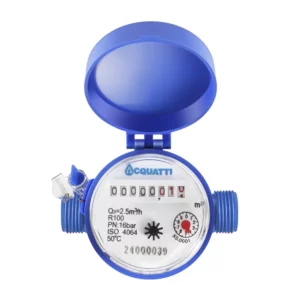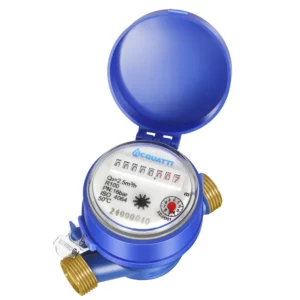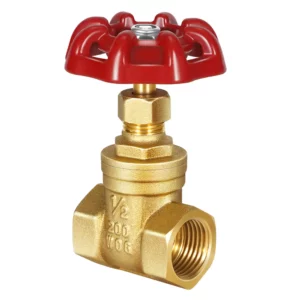Edificio e spazi interni
Il ruolo delle valvole per edifici nei moderni spazi interni e nei sistemi HVAC
L'importanza delle valvole nel settore dell'edilizia e degli spazi interni
Le valvole sono una parte essenziale dell'infrastruttura degli edifici e fungono da guardiani per il controllo dei fluidi nei sistemi idraulici, HVAC, antincendio e di conservazione dell'acqua. Sia negli spazi interni commerciali che in quelli residenziali, le valvole per edifici ad alte prestazioni garantiscono una gestione dei fluidi sicura, affidabile ed efficiente dal punto di vista energetico.
Dalla regolazione della temperatura nel riscaldamento a pavimento alle valvole per l'acqua del bagno, le valvole di controllo garantiscono comfort, convenienza e sostenibilità negli ambienti interni di tutti i giorni. Soprattutto con l'avvento delle valvole per edifici intelligenti, i sistemi automatizzati offrono oggi un monitoraggio in tempo reale, un controllo preciso del flusso e una maggiore efficienza nella manutenzione.
Requisiti ambientali per le valvole utilizzate in applicazioni interne ed edilizie
A differenza degli ambienti esterni, le valvole utilizzate negli spazi interni devono soddisfare requisiti architettonici e di comfort unici:
- Resistenza alla corrosione: Esposizione costante all'umidità nei condotti idraulici o HVAC.
- Integrazione estetica: Deve essere compatto, silenzioso e visivamente discreto.
- Tolleranza termica: Richiesto per valvole di controllo della temperatura ambiente e sistemi di acqua calda.
- Riduzione del rumore: Soprattutto in alberghi, appartamenti e uffici.
- Prevenzione delle perdite: Essenziale nelle pareti interne, nei soffitti e nelle tubazioni incassate nel pavimento.
Che si tratti di una valvola idraulica intelligente o di una valvola HVAC a bassa rumorosità, la resilienza ambientale non è negoziabile nell'architettura d'interni moderna.
Requisiti operativi per le valvole dell'edificio negli impianti interni
I sistemi di valvole per interni devono essere conformi a rigorosi standard meccanici, di sicurezza ed energetici a causa della complessità e della sensibilità degli ambienti chiusi:
- Design a zero perdite: Prevenzione di danni strutturali o muffa dovuti a perdite nascoste.
- Automazione intelligente: Integrato con BMS (Building Management Systems) o piattaforme IoT.
- Efficienza energetica: Ottimizzato per il controllo del clima, il riscaldamento e il raffreddamento delle zone.
- Conformità alla sicurezza antincendio: Le zone classificate antincendio richiedono valvole di intercettazione automatiche certificate.
- Funzionamento silenzioso: Le valvole dei sistemi HVAC interni devono funzionare silenziosamente senza vibrazioni.
Il rigore dell'installazione in un'officina interna consiste nel garantire un montaggio preciso, un'integrazione nascosta e un accesso minimo per la manutenzione.
Le 10 principali applicazioni delle valvole di regolazione per irrigazione e agricoltura
- Sistemi di controllo HVAC (riscaldamento, ventilazione, condizionamento)
- Gestione del flusso d'acqua in bagno e in cucina
- Controllo della valvola di riscaldamento a pavimento
- Zonizzazione della temperatura stanza per stanza
- Sistemi antincendio a sprinkler e di soppressione
- Valvole di regolazione della pressione nel settore idraulico
- Apparecchi a risparmio idrico (WC, rubinetti)
- Valvole di intercettazione interne a parete
- Sistemi intelligenti di monitoraggio dell'acqua per la casa
- Sistemi di riciclo e riutilizzo delle acque grigie
Certificazioni e standard di sicurezza per i sistemi di valvole agricole
- Certificazioni: CE, RoHS, ISO 9001, UL per le valvole antincendio.
- Protezione dall'ingresso: Da IP54 a IP65 per l'installazione in bagno o in condotti nascosti
- Livelli di rumorosità: limiti di livello in dB per le valvole degli impianti HVAC e di riscaldamento
- Sicurezza dei materiali: Componenti atossici in ottone, acciaio inox o PEX compatibili
- Conformità al codice idraulico: ANSI, ASME e codici edilizi regionali
Prodotti correlati
-
Valvole in ferro
Valvole a saracinesca in ghisa NRS
-
Contatori d'acqua
Misuratori d'acqua a secco a getto singolo in plastica
-
Contatori d'acqua
Misuratori d'acqua a secco a getto singolo in ottone
-
Valvole in bronzo e ottone
Valvole a saracinesca in ottone
Volete saperne di più?
Se siete interessati a uno dei nostri prodotti o servizi, compilate il modulo sottostante. Il nostro team si metterà in contatto con voi il prima possibile per fornirvi le informazioni di cui avete bisogno.



